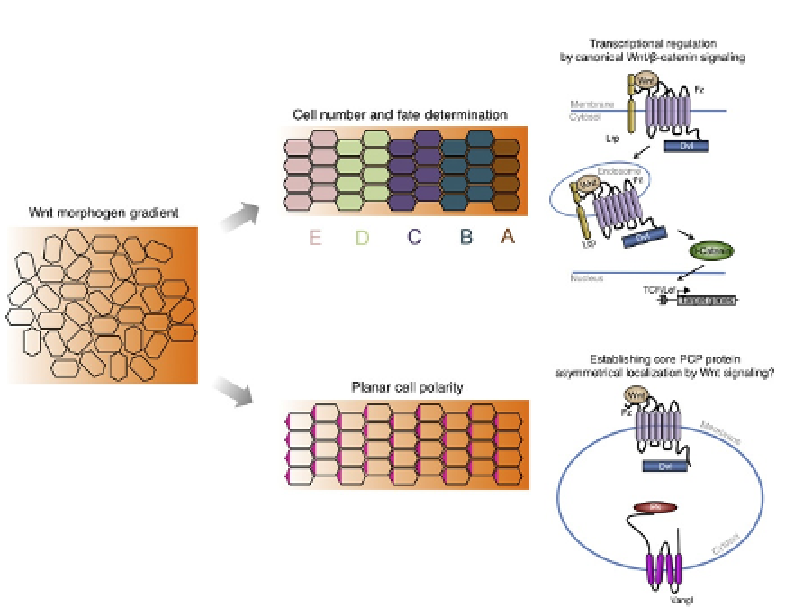Biomedical Engineering Reference
In-Depth Information
Figure 11.3 Dual function of Wnt morphogen gradient. First, Wnt signaling gradient pro-
vides quantitative information to control cell proliferation and cell differentiation
through canonical Wnt/
b
-catenin pathway, which is achieved via endocytosis of key
regulatory components,
b
-catenin stabilization and nuclear translocation, and, finally,
transactivation of target genes. Second, Wnt morphogen acts as a global cue to estab-
lish PCP to convey directional information, which is evidenced by asymmetrical local-
ization of core PCP proteins through an unknown mechanism.
in a specific spatial order at distinct threshold concentration (
Fig. 11.3
).
These are regulated by a series of events including receptor binding,
downstream signal transduction in the cytoplasm, and finally transcriptional
responses. Recent studies have extended the roles of Wnt morphogen to
regulate polarity by providing directional information. However, it is still
largely unknown how responding cells interpret Wnt morphogen gradient
and then use the information to instruct polarized cellular behaviors
(
Fig. 11.3
).
Following ligand binding, internalization of receptors has been found
to be critical for signal transduction in many pathways (
Seto, Bellen, &
Lloyd, 2002
). For instance, Fgf8 morphogen gradient is interpreted in
receiving cells by endocytic trafficking (
Nowak, Machate, Yu, Gupta, &
Brand, 2011
). Furthermore, the duration and extent of signaling exposure
to morphogen gradients can be memorized by receiving cells, and

